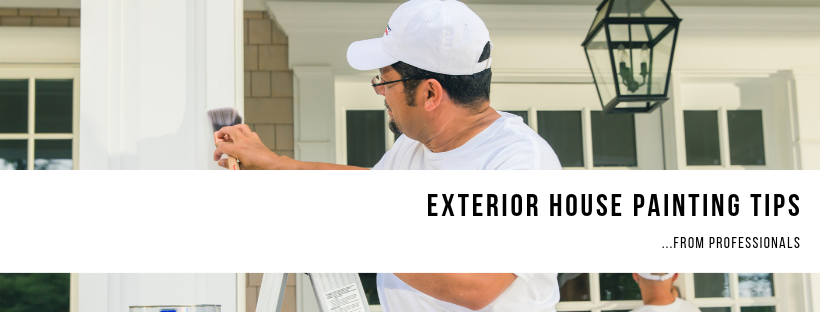
10 Tricks for Painting Your Home’s Exterior
Posted on August 28, 2019
Exterior paint jobs are big jobs, there’s no denying it. Even a house that needs a lot of work can look immensely better with a fresh coat of paint. You’ll love your newfound curb appeal, that is, if you can get through the task at hand. Here are 10 tricks for painting your home’s exterior.
10. Weather
Painting in wet weather is the worst idea. Plan for a season in your area that has moderate temperatures and dry precipitation. Your house needs time to dry out before you put paint on it or you’ll risk paint failure with bubbling and peeling. Allow your house a week of dry time before you decide to paint.
If your region boasts particularly wet or hot weather, it’s best to avoid these times of year. Hot and cold temperatures can cause the paint viscosity to change and make painting harder.
9. Avoid Lead
Homes that were built before 1978 potentially contain lead paint. Attempting to work with this paint on your own is hazardous to your health. The lead in the paint is a neurotoxin and can impair brain function and development.
8. Patch Cracks
Medium to large sized cracks will need repairing before you can start painting. While you work through your exterior for repairs, take note of any issues of cracks that will need caulking. Purchase a paintable, epoxy caulk and fill them as the directions say. For holes, try using an exterior patching compound. It’s important to make sure all of your repair tools are paintable and appropriate for exterior use.
Any larger issues might need a professional to determine the extent of injury to the house and the proper repair path to take.
7. Clean up
Once the old paint issues have been scraped and patching has been completed, it’s time to scrub the house down. Use a pressure washer to scrub any remaining dirt and debris off of the walls. Use 1 cup of trisodium phosphate mixed with 2 gallons of water. With this mixture, use a soft bristled brush to scrub problem areas off. After, rinse it down with clean water and allow plenty of time to dry.
6. Prime
A coat of primer can feel like an unnecessary when it comes to a daunting house painting job. Some professional painters say that priming before painting can add an additional 5 years of life to your home’s paint. Priming seals out mildew and provides an even tooth for the color paint to adhere to.
When it comes to the age old question of oil or latex based primer, most pros will tell you that latex is preferable since it’s easily cleaned with water. The exception is for wooden surfaces, where oil-based primers penetrate into the wood.
5. Caulk cracks
Use a caulk that is approved for painting to fill in cracks, seams, or small pin holes for the exterior. This seals out water and provides an even surface to paint on. If there is water beneath the caulk, you’ll seal it in and keep bubbling at bay. To apply the caulk, use a caulking gun applicator. Run your forefinger over the seal to make smooth line.
4. Treat yourself
Quality paint leads to quality results. It can be tempting to go for a more moderate or low priced paints, but your results will suffer too. More pricey paints utilize better ingredients and pigments to give you a richer color that will last longer.
Most home painting jobs use an acrylic latex paint. It carries several benefits over oil options. These include less volatile organic compounds (VOCs), pliability over time which means less cracking, and messes can be cleaned easily with soap and water.
3. Choose your weapon
Painters fall into two categories: brush or roller. So which is better to use? The answer is both. Each tool provides a different painting experience. Using a brush is good for cutting in and edging, while rollers are good for covering expansive areas of wall. Most painters use both over the course of a job.
1. Brushstrokes
There is a certain amount of talent that goes into house painting. To get the best outcome, start your paint job at the top of the house and work your way down. This will help you to correct drip marks as you work instead of after. Paint in a W shape over walls to avoid holidays and always keep a wet edge as you work.
If you’re considering a professional painter for your job, why not let us bid on it. Make an appointment for your free, in-home estimate today.





